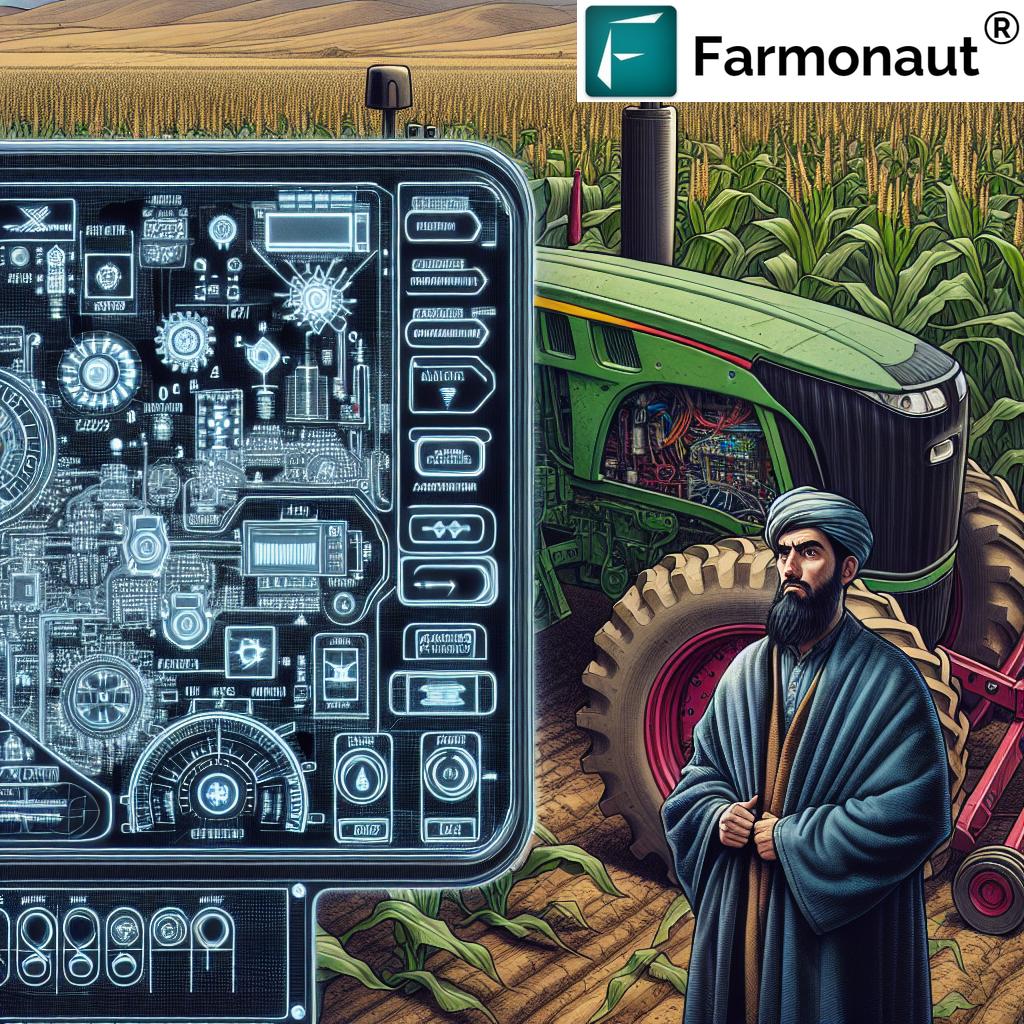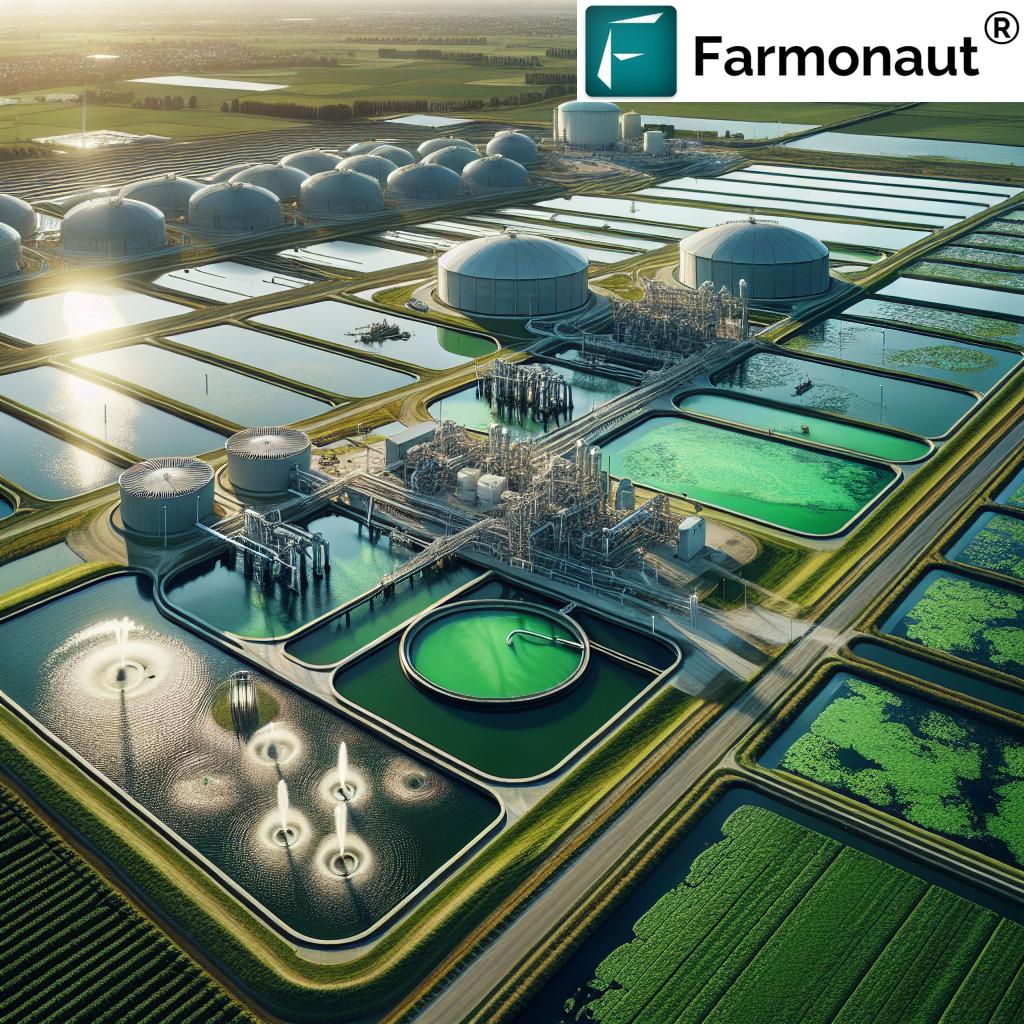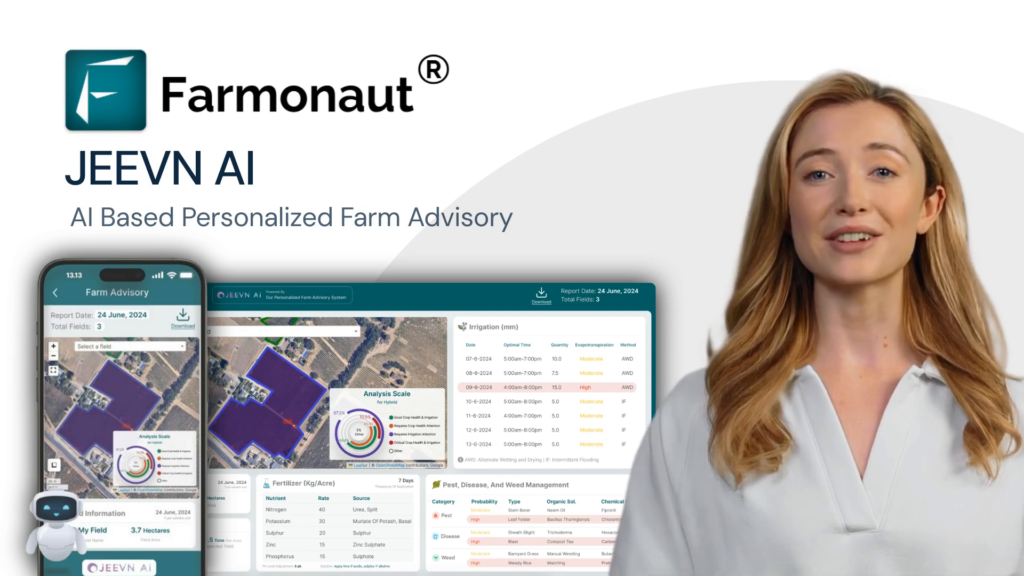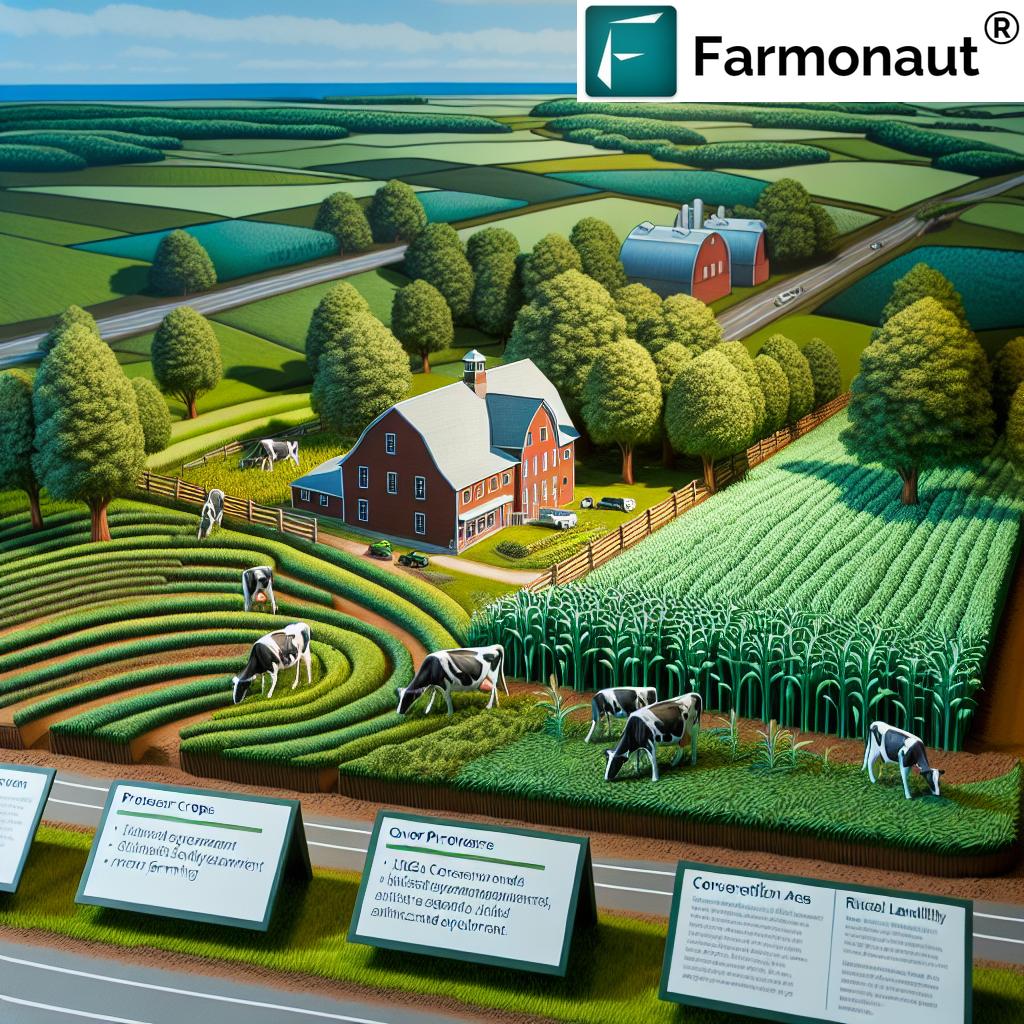USDA: Dept of Agriculture Grants & Loans 2026—Empowering Sustainable Agriculture & Rural Communities
Meta Description: Discover how the USDA United States Department of Agriculture empowers agriculture, food security, and rural sustainability with loans & grants in 2025 and beyond.
Table of Contents
- Introduction – USDA’s Pivotal Role in U.S. Agriculture
- Trivia: USDA’s Investment in Rural Development
- The USDA United States Department of Agriculture: Mission & Vision in 2025–2026
- Enhancing Food Security & Safety with USDA Programs
- Department of Agriculture Loans: Types, Impact, & 2025–2026 Trends
- Department of Agriculture Grants: Innovation, Market Access & Rural Investment
- Forestry & Conservation: The USDA’s Approach to Sustainable Land Management
- Partnership with State Departments of Food and Agriculture: Enhancing Local Impact
- USDA Grants & Loans Overview Table: Environmental & Sustainability Initiatives
- Technological Innovation: USDA & Modern Agriculture
- How Farmonaut Supports USDA’s Goals in Agricultural Sustainability
- Trivia: USDA’s Food Security Impact
- USDA’s Strategic Vision 2026 and Beyond
- FAQ: USDA Loans, Grants & Agriculture 2026
- Farmonaut Application Links & Subscription Info
Introduction – USDA’s Pivotal Role in U.S. Agriculture
The USDA United States Department of Agriculture stands as the cornerstone of the nation’s agricultural economy, championing food security, rural development, and environmental stewardship. As we approach 2025 and 2026, the USDA continues to drive innovation through a robust framework of department of agriculture loans, department of agriculture grants, and targeted programs supporting farmers, ranchers, and communities across the United States. In this in-depth guide, we will explore how the USDA sustains and advances the agriculture sector, improves rural livelihoods, and empowers the next generation of American food producers and innovators.
This comprehensive review is especially crucial in today’s era of rising input costs, climate change pressures, and evolving market demands. We break down the vast offering of financial assistance, research incentives, and sustainability initiatives available to agricultural producers, rural communities, and innovators through 2026. Let’s uncover how federal agencies and technology—like the solutions offered via Farmonaut—work together to strengthen agriculture and food security for all Americans.
“The USDA awarded over $5.2 billion in rural development grants and loans to support sustainability initiatives in 2025.”
The USDA United States Department of Agriculture: Mission & Vision in 2025–2026
The USDA United States Department of Agriculture remains dedicated to advancing a resilient, innovative, and sustainable food and agriculture sector. As a federal agency, its core mission revolves around sustaining agricultural productivity, promoting rural economic growth, and ensuring that all Americans have access to safe, nutritious, and affordable food. These goals are more vital than ever as the agricultural sector faces increased environmental and market challenges leading into 2026.
The department manages policies covering farming, forestry, food safety, conservation, and nutrition programs. In 2025, the USDA is further strengthening its commitment to:
- Food Security: Guaranteeing nutritious and affordable food for all Americans.
- Rural Development: Fueling growth and opportunity in rural communities.
- Conservation & Sustainability: Protecting U.S. forests, farmland, water, and natural resources for generations to come.
- Agricultural Innovation: Leading with data-driven programs, research, and technology for resilient agricultural practices.
- Support for Farmers & Producers: Providing vital assistance, flexible loans, and grants to empower farm and ranch businesses facing emerging challenges.
The USDA’s programs and policies directly align with current national priorities: sustainability, climate-smart practices, and improving equity and opportunities for socially disadvantaged and beginning farmers and ranchers.
Enhancing Food Security & Safety with USDA Programs
Food security remains a cornerstone of the USDA’s role. The department oversees an integrated food supply chain that keeps healthy, safe, and affordable food on tables across urban and rural America. Nutrition programs—like SNAP (Supplemental Nutrition Assistance Program), school meal programs, and WIC—ensure food access for the most vulnerable populations.
The USDA’s research-driven approach helps identify and address emerging threats such as plant and animal diseases, invasive pests, and contamination risks. With a special focus on rural communities, the department consistently adapts and expands these programs to ensure that sustainable agriculture and food security remain at the heart of the nation’s well-being as we move into 2026 and beyond.
Key highlights for 2025–2026
- Accelerated efforts to enhance supply chain resilience post-pandemic and amid global disruptions.
- Expanded food safety research and education programs.
- Nutrition assistance modernization: digital tools, mobile app integration, and streamlined eligibility.
- Strong emphasis on food sovereignty in tribal and remote communities.
Department of Agriculture Loans: Types, Impact, & 2025–2026 Trends
Department of Agriculture Loans: Fueling Growth and Sustainability
Department of agriculture loans remain a lifeline for American agricultural businesses, ranchers, and rural communities as they face climate change, evolving regulations, and volatile markets in 2025 and beyond. The USDA Farm Service Agency (FSA) has refined its approach to ensure its range of direct and guaranteed loans serve the most pressing needs of modern farmers and producers.
These financial solutions enable eligible recipients to:
- Purchase land, equipment, and livestock
- Cover operating expenses and manage cash flow
- Invest in conservation initiatives and sustainable production systems
- Adopt renewable energy and water-saving irrigation systems
- Advance climate-smart and innovative farming practices
Specific loan programs include:
- Direct Farm Ownership Loans: For purchasing farms, expanding operations, and constructing or repairing farm buildings.
- Operating Loans: To buy equipment, seed, livestock, and essentials for daily operations.
- Microloans: Designed to help beginning farmers, urban agriculture, and specialty crop producers with smaller, more flexible amounts.
- Guaranteed Loans: USDA backs privately issued loans to encourage lenders to offer more favorable terms to agricultural businesses.
- Conservation Loans: Incentivize soil health, water conservation, and energy initiatives benefiting both productivity and the environment.
In 2025 and 2026, there is a strong emphasis on loans supporting:
- Socially Disadvantaged and Beginning Producers: Customized outreach, technical support, and flexible financing options.
- Adoption of New Technology: Financing for precision agriculture, climate-resilient systems, and digital monitoring enabling more efficient and sustainable farming.
- Risk Mitigation: Working capital lines to address rising input costs and market volatility.
Conservation and sustainability remain at the heart of department of agriculture loans policy in 2026—empowering financial investments that build long-term resilience and reduce environmental risks.
Satellite-based verification is revolutionizing loan and insurance processing. Explore Farmonaut’s crop loan and insurance solutions—designed to streamline financial access for agricultural producers using satellite imagery for quick, transparent, and secure eligibility checks.
Department of Agriculture Grants: Innovation, Market Access & Rural Investment
Department of Agriculture Grants: Accelerating Innovation and Rural Development
Department of agriculture grants remain the backbone of research, technology adoption, and market expansion in the sector for 2025–2026. The USDA’s grant programs are meticulously designed to fund projects and initiatives that push the boundaries of sustainable agriculture, support food and nutrition research, and invest in rural infrastructure.
Grants are provided to:
- Individual farmers and producer groups
- Agricultural cooperatives
- Educational and research bodies
- State and local governments
- Rural business ventures and non-profits
Notable grant programs include:
- Sustainable Agriculture Research and Education (SARE) Program: Funding for on-farm research, education projects, and the adoption of climate-smart, data-driven, and sustainable agriculture practices.
- Value-Added Producer Grant (VAPG): Supports product innovation, new processing, and marketing approaches.
- Agricultural Marketing Service Grants (AMS): Promoting local food systems, specialty crops, and organic initiatives.
- Rural Infrastructure Investment Grants: Improving broadband, clean water, and utility access in rural, underserved communities.
- Community Facilities Direct Loan & Grant Program: Ensuring access to healthcare, education, and vital infrastructure in rural America.
These programs award funding to turn ambitious sustainability goals into real-world projects—from precision irrigation systems to renewable energy adoption, and from post-harvest technology research to digital traceability in supply chains.
Enhance food safety, trust, and transparency with Farmonaut’s blockchain-based traceability solution. This tool supports seamless supply chain authentication, a vital component aligning with USDA’s sustainability and market competitiveness objectives.
By funding innovation and rural infrastructure, department of agriculture grants deliver economic growth, strengthen environmental stewardship, and improve the quality of life for millions of Americans.
USDA Grant Application Essentials for 2026
- Review annual USDA NOFAs (Notices of Funding Availability) at the official USDA grants website.
- Track application deadlines closely—many programs open in Q1 or Q2 each year.
- Prepare detailed proposals demonstrating environmental impact, social equity, and community engagement.
- Consider partnership models for broader impact: while individual applicants are eligible, collaborative efforts can increase grant scope.
Take control of your carbon emissions. Leverage Farmonaut’s carbon footprinting solution to monitor and report environmental impact—a crucial factor for successfully securing grants that require measurable sustainability outcomes.
Next, let’s see how the USDA’s environmental vision for forestry and conservation is interwoven with its funding priorities.
Forestry & Conservation: The USDA’s Approach to Sustainable Land Management
The USDA—through its esteemed Forest Service—plays a vital role in managing the nearly 193 million acres of national forests and grasslands. In 2025–2026, the department’s conservation agenda is more crucial than ever for climate change mitigation, biodiversity preservation, and wildfire risk management.
- Wildfire Risk Reduction: Modern monitoring, AI-driven fire prediction (like solutions available from Farmonaut), and active forest management reduce risk and build resilience.
- Timber Production & Economic Growth: Sustainable forestry practices generate revenue and jobs, while minimizing environmental impact.
- Biodiversity Conservation: Habitat protection for endangered species and native flora/fauna.
- Public Engagement & Education: Outreach and partnership programs for landowners and local communities ensure that national priorities translate into actionable steps at the forest landscape level.
Conservation and environmental stewardship aren’t just buzzwords—they are integral to the USDA’s identity and mission in 2026, deeply influencing both department of agriculture loans and grants policy frameworks.
For comprehensive satellite monitoring and advisory for plantation forests, check out Farmonaut’s plantation and forest advisory services—equipping landowners and agencies with actionable, science-driven guidance for long-term land and resource stewardship.
Partnership with State Departments of Food and Agriculture: Enhancing Local Impact
While the USDA operates at the federal level, the departments of food and agriculture in each state are instrumental in bridging national strategies with local realities. They play a critical role in:
- Administering department of agriculture grants and loans adapted for regional needs
- Guiding growers on compliance with food safety and sustainability policies
- Fielding technical assistance (education, conservation outreach, crop management)
- Promoting local market development and community-specific projects
- Supporting nutrition, climate adaptation, and rural business development
Examples include the California Department of Food and Agriculture’s incentives for specialty crop producers, water conservation programs in the Midwest, or dairy modernization grants in Wisconsin. The synergy between federal and state departments ensures that every region of the country can thrive, innovate, and adapt—even as the broader agricultural landscape changes rapidly.
USDA Grants & Loans Overview Table: Environmental & Sustainability Initiatives
The table below summarizes major USDA department of agriculture grants and loan programs available in 2025, with a focus on sustainability and environmental stewardship. It’s a quick reference to identify opportunities, funding levels, and application timelines for those eager to improve their agricultural, forestry, and rural operations.
| Program Name | Purpose | Estimated Funding Amount (USD, 2025) | Eligible Recipients | Key Sustainability Features | Application Deadline |
|---|---|---|---|---|---|
| Environmental Quality Incentives Program (EQIP) | Support conservation efforts on working lands | $2.1 Billion | Farmers, Ranchers, Forest Landowners | Soil health, water/air quality, wildlife habitat, nutrient management | Rolling, varies by state (often April–August) |
| Sustainable Agriculture Research and Education (SARE) | Advance on-farm research & sustainable ag education | $80 Million | Researchers, Farmers, Educators, Extension, Grad Students | Innovative practices, climate resilience, soil & water conservation | October–December annually |
| Rural Energy for America Program (REAP) | Promote renewable energy & energy efficiency | $500 Million | Rural Small Businesses, Agricultural Producers | Solar, wind, bioenergy, lighting, irrigation upgrades | March & October (biannual deadlines) |
| Value-Added Producer Grant (VAPG) | Support new markets, processing, and marketing | $45 Million | Independent Producers, Ag Co-ops, Producer Groups | Local food expansion, post-harvest innovation, market diversity | April–May annually |
| Community Facilities Direct Loan & Grant Program | Upgrade rural infrastructure | $2.7 Billion | Public bodies, nonprofits, tribes, rural communities | Water systems, clinics, broadband, schools | Quarterly (flexible) |
| Conservation Innovation Grants (CIG) | Fund next-gen conservation technology & pilot projects | $25 Million | Producers, NGOs, Research Entities | Greenhouse reduction, precision ag, digital monitoring, robotics | January–March annually |
| Farm Labor Housing Loans & Grants | Develop safe, affordable rural housing | $285 Million | Farms, Nonprofits, Tribal Entities, Local Governments | Energy efficiency, water quality, housing safety | Rolling (subject to funds) |
| Direct Farm Ownership/Operating Loans | Finance land, equipment, and operations | $1.8 Billion | Farmers, Ranchers (incl. beginning & underserved) | Regenerative farming, resource stewardship, support for disadvantaged groups | Continuous |
Scale your operation with digital farm management. For streamlined, multi-farm oversight, see Farmonaut’s large-scale farm management app for unified satellite-based insights and data-driven decision-making across hectares or multiple locations.
Technological Innovation: USDA & Modern Agriculture
The USDA is leveraging the next wave of agricultural innovation in 2025 and 2026—from AI-powered crop monitoring to blockchain food traceability and precision input applications. The department actively collaborates with technology developers, encourages on-farm tech adoption through grants/loans, and shapes federal guidelines for technology-driven risk mitigation and sustainability.
- Widespread adoption of satellite imagery for crop health (NDVI), drought forecasting, and yield monitoring
- Mobile apps, remote sensors, and data analytics for resource management
- Blockchain tools for food supply chain authentication, supported in USDA market development initiatives
- Precision ag and robotics pilot programs—for efficient fertilizer use, soil health, and labor management
- Environmental technology innovations—from carbon sequestration tracking to smart irrigation
Optimize your farm and fleet logistics with real-time satellite data. Discover Farmonaut’s fleet management tools—empowering agricultural businesses to monitor machinery, vehicles, and resource movements efficiently.
How Farmonaut Supports USDA’s Goals in Agricultural Sustainability
At Farmonaut, we’re dedicated to making satellite-driven agricultural insights accessible and affordable by integrating innovative technology for users across the agriculture sector. Our mission is closely aligned with USDA’s vision for 2026: strengthening resilience, transparency, and environmental stewardship in food and resource production.
- Real-Time Satellite Monitoring: We enable agricultural producers to track vegetation health (NDVI), drought stress, soil condition, and water use with a click—fueling data-driven decisions for greater yield and resilience.
- AI-Based Advisory: Our Jeevn AI system provides context-aware recommendations and weather forecasts, helping users adapt smarter farming and resource management practices.
- Blockchain Traceability: We facilitate secure, end-to-end authentication of agricultural products—meeting market demands for transparency, sustainability, and food safety.
- Fleet & Resource Management: Our tools optimize machinery logistics, cut costs, and reduce environmental footprints across large and small operations alike.
- Environmental Impact Monitoring: We track real-time carbon emissions, supporting compliance, grant eligibility, and sustainability reporting for farmers and agribusinesses.
Accessible via web and mobile apps, our services are scalable for everyone—from smallholders in rural communities to large agribusinesses, financial institutions, and local/federal agencies looking to foster innovation and sustainability in agriculture.
If you’re seeking to integrate satellite-powered technology and climate-smart practices into your farm, ranch, or rural development project, Farmonaut is here to help you achieve those goals in 2026 and the years ahead.
Developers & Businesses: Tap into satellite & weather data for your own apps via the Farmonaut API (Developer Docs here).
“In 2025, USDA-backed programs improved food security for 13 million Americans in rural communities.”
FAQ: USDA Loans, Grants & Agriculture 2026
-
What is the difference between USDA department of agriculture loans and grants?
Loans must be repaid (often on favorable terms) and primarily support capital investments like land, equipment, and infrastructure. Grants are funds you don’t have to repay, typically allocated for research, innovation, conservation practices, or specific economic development projects. -
Who can apply for USDA loans and grants in 2026?
Farmers, ranchers, agricultural cooperatives, rural businesses, non-profits, tribes, research institutions, state/local governments, and sometimes beginning or socially disadvantaged producers. Always read the eligibility guidelines for each program. -
Which USDA programs are best for sustainable farming and climate adaptation?
EQIP, SARE, REAP, CIG, and VAPG all support climate adaptation, resource conservation, energy efficiency, and food system resilience. Review the table above for sustainability features. -
How do I apply for USDA department of agriculture loans or grants?
Applications are managed online at the USDA’s website or via local FSA offices. Grants often require a project proposal detailing outcomes, budget, and alignment with program goals. -
Are USDA programs available in all U.S. states and territories?
Yes, with some specifics varying by state. The federal USDA coordinates closely with state departments of food and agriculture for local implementation. -
How is technology influencing USDA programs in 2026?
Technology is central—AI, satellite imagery, blockchain, data analytics, and digital monitoring tools are increasingly used for everything from loan verification to conservation compliance, yield forecasting, and market access.
USDA’s Strategic Vision 2026 and Beyond
Looking to the future, the USDA United States Department of Agriculture continues to refine its mission, expand its financial services, and innovate through research and technology for a thriving, sustainable agricultural system. Priorities include:
- Increasing Access & Equity: Easing access to resources for underserved, beginning, and minority producers.
- Driving Climate-Smart Solutions: Mainstreaming carbon tracking, regenerative agriculture, cover cropping, and technology-driven conservation.
- Enhancing Supply Chain Resilience: Funding infrastructure, local food systems, and market innovation for post-pandemic security.
- Investing in Talent & Research: Engaging the next generation of agricultural scientists, entrepreneurs, and extension agents.
- Scaling Data-Driven Management: Encouraging adoption of digital and satellite platforms—supporting everything from precision farming to compliance with environmental standards.
The United States Department of Agriculture remains pivotal in ensuring America’s agricultural, nutritional, and environmental security, now and for generations to come.
Farmonaut Application Links & Subscription Info
- Try Farmonaut for yourself:
Open Farmonaut Web App - Get the Android App:
Download on Google Play - Get the iOS App:
Download on the App Store - API access:
Farmonaut API –
Developer Documentation
For detailed product information on carbon monitoring, supply chain traceability, soil health analytics, resource/fleet management, or satellite-rooted farm oversight, visit the relevant Farmonaut product links above.
Conclusion
The USDA United States Department of Agriculture remains essential to supporting agriculture, food security, and rural sustainability through its wide array of department of agriculture loans, grants, and research-driven programs. Its role in fostering environmental stewardship, economic opportunity, and sector resilience becomes ever more critical as we move into 2026 and beyond.
For everyone involved in the food and agriculture value chain, staying informed and resourceful—as well as utilizing advanced digital tools like those from Farmonaut—will be vital for long-term success, sustainable growth, and environmental responsibility. The future of American agriculture depends on our collective ability to empower communities, modernize practices, and innovate together.















